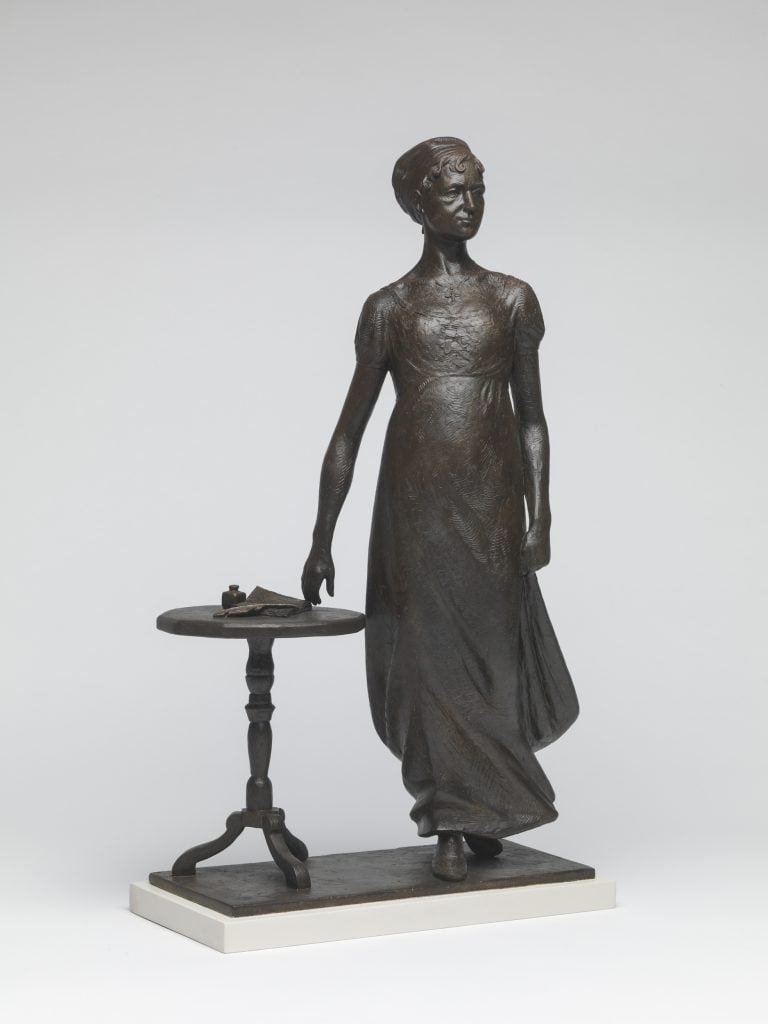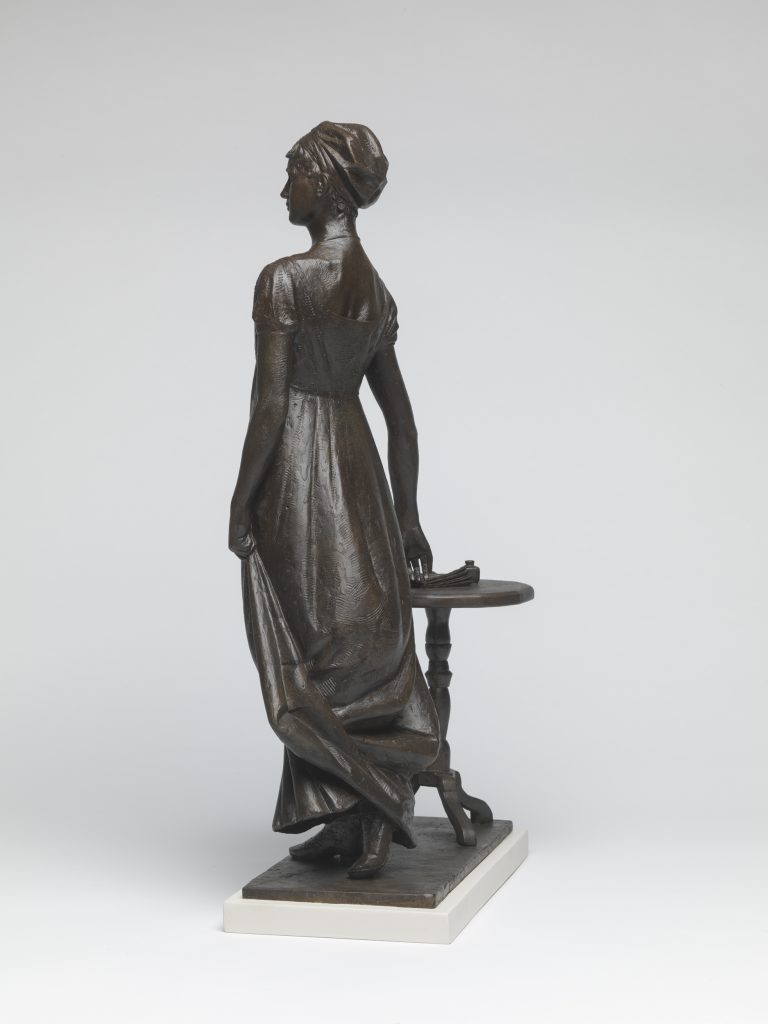Art World
U.K. Locals Fear a Jane Austen Statue Could Turn Winchester Cathedral Into ‘Disneyland’
The first design of a statue of the Hampshire-born author has been revealed—to mixed reactions.

In 2023, Winchester Cathedral announced its plans to spend £100,000 ($128,000) on a life-sized statue commemorating the Hampshire-born author Jane Austen. The team at the 931-year-old cathedral has since defended its decision, after plans for the statue have been criticized by locals and experts alike, with one warning that Winchester could be turned into “Disneyland-on-Itchen.”
The plan stands for the statue to be unveiled in 2025 to celebrate the author’s 250th birthday. Jane Austen was born in the Hampshire village of Steventon in 1775 and was largely unappreciated as a writer until a biography was written by her nephew James Edward Austen-Leigh in 1870. New editions of her works were also published in the early 20th century, catapulting her to fame. The author died in Winchester in 1817 and is buried in the north nave aisle of the historic cathedral.
Former chairman of the Jane Austen Society, Elizabeth Proudman, has said, however, that despite the author’s connection with the area, Austen was a “very private person” who “despised publicity,” making a tribute inappropriate.
The statue will stand at about 5 feet in close proximity to Austen’s memorial gravestone. The commissioned artist, Martin Jennings, is based in Gloucestershire and recently created the portrait to be used by the Royal Mint for coins of King Charles III. The artist is well-known for his depictions of authors, and has created sculptures of Charles Dickens, John Betjeman, Philip Larkin, and George Orwell. The design shows Austen stood upright, touching her writing desk on which are her paper, quill, and ink pot.

Photo: Steve Russell Studios.
The sculpture will be placed in the Inner Close, which has also roused criticism, with Proudman explaining that the Inner Close was “where the monks had a private area, it’s a special place.” She added: “I don’t think we want to turn it into Disneyland-on-Itchen. I don’t think the Inner Close is the place to attract a lot of lovely American tourists to come and have a selfie with Jane Austen.”
Phil Howe, founder of Hidden Britain Tours pointed out in a letter to the Hampshire Chronicle that the author, at the time of her burial at the cathedral, was “not recognized as a writer, buried as the daughter of her rector father and only later was a memorial placed on an adjacent wall acknowledging her as an author” and that the addition of this third memorial to the writer would be “disproportionate.”
A brass plaque was installed in 1872—55 years after Austen’s death, to note her literary achievements, at the request of her nephew Austen-Leigh. Howe added: “Winchester need not follow Bath’s hijacking of the Jane Austen brand with a cynical cultural misappropriation commemorating the work of one of the world’s most famous female novelists.”
The Very Reverend Catherine Ogle, the dean of Winchester Cathedral, maintains that Jennings’s “splendid and sensitive design” will be a “very fitting tribute,” writing in the Hampshire Chronicle that “the proposed location of the statue in the Inner Close is close to the route she would have taken when visiting her nephews at the nearby Winchester College and her friends at No 12 The Close.” Ogle also spoke to the Church Times, saying that “a well-considered statue in an outdoor or public space has the capacity to surprise and delight, to bring additional meaning to a place which might not otherwise be apparent to a casual passer-by.”
The funds for the project are coming from private donations, with plans due to start next month for its creation.





